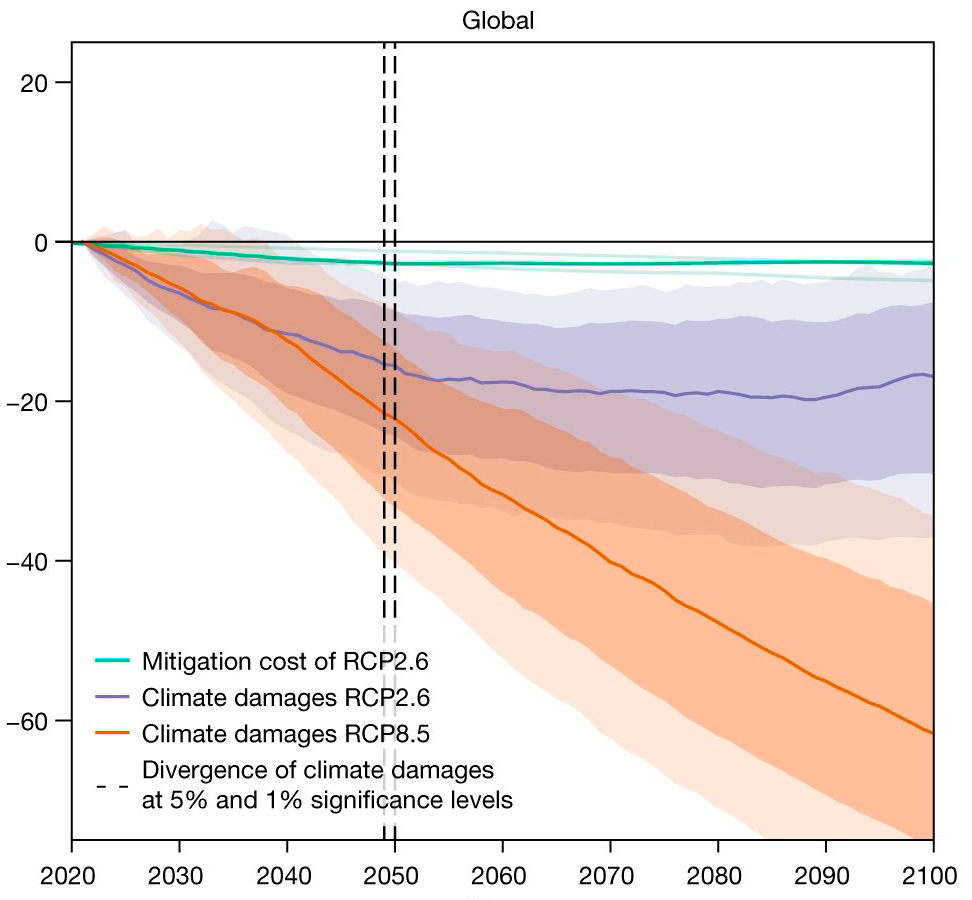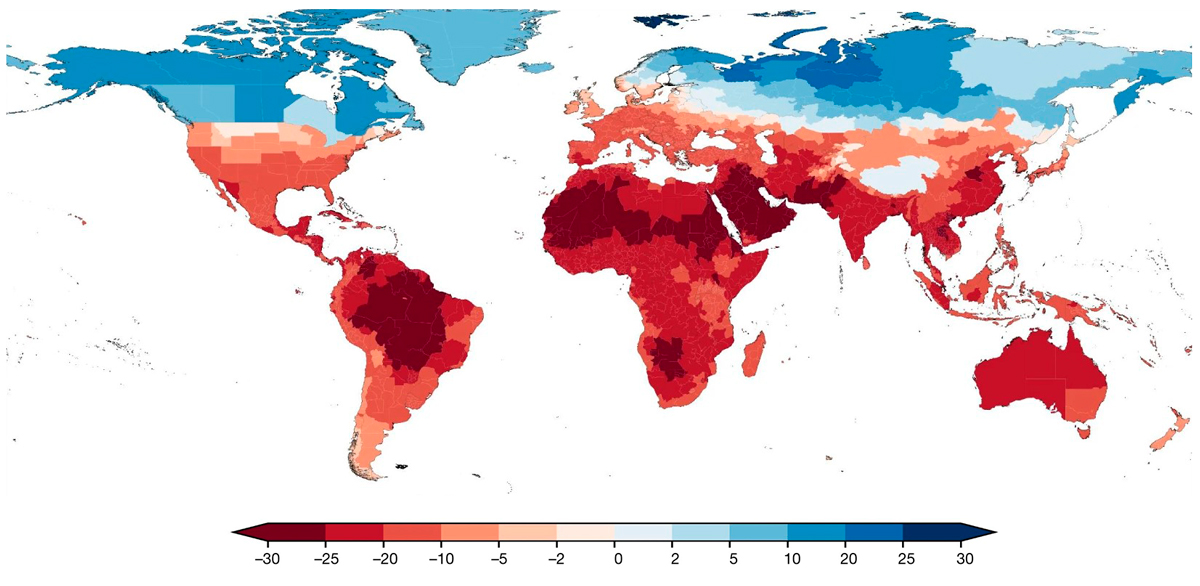On April 17, Nature, one of the world’s most prestigious scientific journals, published a shocking prediction: irreversible climate change will lead to an average 19% decline in national income per capita over the next quarter century. In 2005 prices, this equates to an annual loss of over $38 trillion.
Too late?
The study, conducted by scientists from Germany, is based on a number of empirical data sets. They carefully selected weather indicators for the years 1979-2019 around the world for 1,600 subnational regions, such as individual US states, as well as information on the economic development of the regions. They then analyzed them, comparing them with the results of existing models that predict likely scenarios for greenhouse gas emissions up to 2100.
I agree, it sounds too complicated. However, to understand the problem, it is not at all necessary to understand climatic and mathematical terms. The main thing is to recognize: the published study is a very serious scientific work, based on already known factual data on the impact of climate on the economy.
I would like to note that this is specifically about the impact on the economy. The authors of the paper repeatedly emphasize that the damage mentioned does not take into account non-economic consequences, such as the loss of biodiversity, i.e. the disappearance of entire species of animals, plants, insects, as well as the death of people.
Another extremely important caveat: all the above figures for economic losses are already irreversible. No matter how much effort humanity makes, the benefits from them will only appear in the second half of the century. And the damage already caused is a consequence of previous years of burning fossil fuels.
The modeling conducted by scientists takes into account most of the likely economic losses: crop losses due to drought or excessive rains, reduced labor productivity, infrastructure losses, etc. However, they do not take into account losses due to a possible increase in extreme weather events such as storms and wildfires. So the elements could further exacerbate the damage.
It might seem to you that humanity, doomed to pay for the active industrialization of the past decades, can do nothing at all. In fact, this is not so. If we adhere to at least the agreements contained in the Paris Climate Agreement, signed by countries in 2015, humanity can stabilize the curve of further damage and even improve the situation somewhat by 2100. If we do not do even this, modeling shows, the median value of per capita income losses will reach 60%.
That is, the average person on the planet will be 60% poorer by the end of the century than would be the case under a stable climate.

The graph shows global economic losses in per capita income as a percentage of a hypothetical baseline (black horizontal line) under which the climate remains stable. The green line is the projected cost of humanity to implement the Paris Agreement. The blue line is the economic losses if the Paris Agreement is implemented. And the orange line is one of the negative but likely scenarios of economic losses with higher greenhouse gas emissions.
What to do?
All of the percentages of future losses given should be compared to a hypothetical scenario in which the temperature on the planet remains stable and does not rise. As I noted above, humanity has already irrevocably missed this point. Therefore, the efforts we make now and in the future can bring tangible benefits only in a quarter of a century.
The already mentioned Paris Agreement in this context is currently the only working mechanism. And this status significantly limits the space for both criticism of the initiative and its promotion - there is nothing better anyway.
The agreement obliges countries to gradually reduce greenhouse gas emissions in order to keep the increase in the average temperature on the planet within +2 degrees relative to the pre-industrial era by 2100. It is difficult to say how likely this scenario is. But, according to estimates, its implementation will cost the economies of countries approximately $6 trillion in 2050. Which is 6 times less than the expected losses in the same year.
Not everyone will be affected
The concept of global warming is not without doubt. Its critics emphasize that our planet has experienced similar periods before. So, supposedly, there is nothing to worry about. But if you look at the map of projected economic losses, it becomes clear that not everyone can risk betting on the "naturalness" of the warming process.
The scale of the troubles is disproportionately high for the equatorial and southern regions of the planet. And some northern regions may even gain economic benefits from climate change. By the way, Ukraine is not among the latter: according to the authors of the work, for our country, the losses will be about 10% for most regions, more than 15% for Crimea and southern regions, and about 5% for northeastern regions.
The global paradox and injustice is that the countries that have contributed the least to climate change will suffer the most from it.

Map of unavoidable losses of national income per capita by region of the planet in 2050 as a percentage of the hypothetical baseline scenario.
Of course, you may not believe in global warming. And during a war, such issues are quite accurately and naturally relegated to the background. However, we should think about climate change from the perspective of the future of the planet and our children and grandchildren. So, if you have the opportunity, it is better to walk that one stop. Save on electricity. Don't consume anything that is frankly unnecessary: from food to clothes. Be responsible and aware of the environment. This will save you money today and have a big impact on the environment tomorrow. Take these small, imperceptible steps for the sake of your own well-being and the future of your children.










